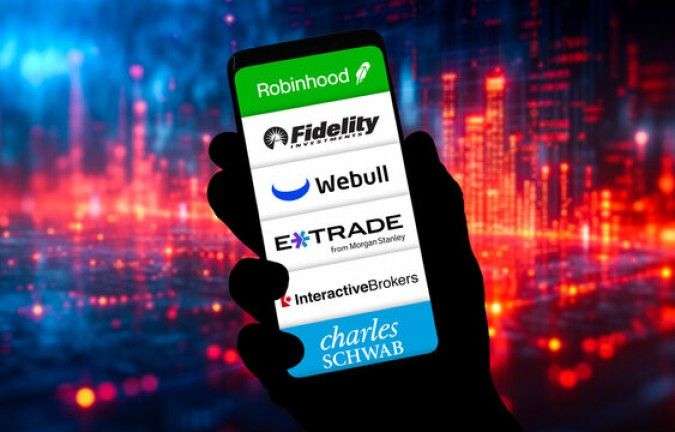The stock market can be an exciting yet unpredictable place. As an investor, I’ve learned that euphoria often plays a significant role in market movements. It can propel stock prices to unsustainable heights, only for them to crash once the excitement fades. In this article, I will walk you through how to gauge stock market euphoria, why it happens, and the impact it can have on your investment strategy.
When we talk about stock market euphoria, we refer to a period where investor optimism reaches excessive levels. During such periods, market prices can rise far beyond what fundamentals justify. Investors become overly optimistic, and they chase stocks simply because they’re going up, not necessarily because of the underlying value. Recognizing this phenomenon early can help you make better investment decisions.
Table of Contents
The Nature of Stock Market Euphoria
Stock market euphoria is closely linked to a surge in investor sentiment. In these phases, market participants are often driven by emotion rather than rational analysis. This leads to stock prices disconnecting from their intrinsic value. The euphoria creates a sense of urgency among investors, causing them to pile into stocks, hoping to capitalize on the upward momentum.
It’s not hard to see why this happens. When the market starts to rally, more and more people want to get in on the action. Media coverage, positive news, and stories of people making significant profits further fuel the frenzy. It’s the classic herd mentality, where everyone jumps in because everyone else is doing it.
However, this period of excessive optimism doesn’t last forever. Eventually, the bubble bursts. When the reality doesn’t meet the inflated expectations, stock prices fall, and the euphoria turns to despair.
Identifying Euphoria: Key Indicators
So, how do you recognize stock market euphoria when it happens? There are several indicators that I use to gauge whether the market is in an overly euphoric state. Let’s break down some of the key ones.
1. Rising Price-to-Earnings (P/E) Ratios
One of the first signs of market euphoria is when price-to-earnings (P/E) ratios start to rise significantly. The P/E ratio is a common measure of how expensive a stock is relative to its earnings. In a euphoric market, investors are often willing to pay a premium for stocks, pushing P/E ratios higher. This is a sign that the market is willing to overlook fundamentals.
For example, let’s compare two periods in market history: the dot-com bubble in the late 1990s and the housing bubble in the mid-2000s. During both periods, the P/E ratios of many stocks soared to unsustainable levels. At the height of the dot-com bubble, the P/E ratio of the Nasdaq Composite Index was over 100, far higher than its historical average of around 20. When the bubble burst, many of those stocks lost 70-80% of their value.
2. Surge in Speculative Investing
Another telltale sign of euphoria is a surge in speculative investing. This is when investors take on higher levels of risk in the hope of making quick profits. You often see a rise in the popularity of speculative assets like penny stocks, cryptocurrencies, or even overleveraged options trading.
A simple example of this is the rise in popularity of meme stocks like GameStop and AMC in early 2021. Fueled by social media and retail investors, these stocks saw their prices skyrocket to unsustainable levels. Even though the underlying fundamentals didn’t support these prices, the excitement and speculation led to massive gains for a short time.
3. Volume and Velocity of Trades
The volume of trades can also indicate the level of euphoria in the market. During euphoric periods, trading volume tends to surge as more and more people participate in the market. Prices can move rapidly, and stocks can go up or down by large percentages within a short period of time. This volatility is another sign of market excitement.
I remember during the 2008 financial crisis, when the market had been in a euphoric state prior to the crash. The volume of trades surged in the months leading up to the crash. People were buying stocks, not based on fundamentals, but because everyone was doing it. The speed at which prices moved was exhilarating—until the crash came.
Comparing Euphoria to Rational Market Behavior
To illustrate the difference between market euphoria and more rational market behavior, I’ve created a simple comparison table. In it, I’ll highlight the key features of a euphoric market versus a more balanced one.
| Feature | Euphoric Market | Rational Market |
|---|---|---|
| Investor Sentiment | Excessively optimistic, driven by fear of missing out (FOMO) | Optimistic, but tempered by analysis and caution |
| Stock Valuations | Overvalued relative to earnings and growth prospects | Fairly valued based on earnings and growth |
| Market Activity | High volume of speculative trading, rising volatility | Moderate trading volume with steady price movements |
| P/E Ratios | Significantly above historical averages | Close to or around historical averages |
| Investor Behavior | Herd mentality, chasing quick gains | Long-term investment based on fundamentals |
| Risk Appetite | High risk tolerance, often ignoring fundamentals | Risk tolerance aligned with personal financial goals |
As you can see, during periods of euphoria, the market becomes irrational. Investors throw caution to the wind and start making decisions based on emotion rather than logic. In contrast, in a rational market, investors consider the fundamentals, make decisions based on analysis, and have a more balanced outlook.
The Role of Media and Social Influence
Media coverage can play a significant role in amplifying stock market euphoria. During euphoric times, positive news stories can dominate the headlines. These stories highlight the success of certain stocks or sectors, making them seem like foolproof investments. Investors start to believe that the stock market is a guaranteed way to make money, and they begin to pile in.
Social media has also become a powerful driver of euphoria. Platforms like Twitter, Reddit, and Instagram allow investors to share their experiences, often with little regard for the actual fundamentals behind the stocks. A single viral tweet or post can trigger a massive rally in a stock, even if there’s no real reason for the stock’s price to rise.
One example of this phenomenon occurred in 2021 when retail investors on Reddit’s WallStreetBets forum drove up the price of GameStop. This was a classic case of social media-fueled euphoria. People got caught up in the excitement, and the stock price skyrocketed, even though the company’s business was struggling. The entire event was driven by speculation and the collective mindset of retail investors.
The Dangers of Riding the Wave
While it can be tempting to get caught up in the excitement of a euphoric market, it’s important to recognize the risks. Historically, markets that experience euphoria tend to face sharp corrections when the bubble bursts. If you’re not careful, you could find yourself holding onto overvalued stocks that lose their value quickly.
One of the main dangers of stock market euphoria is the herd mentality. When everyone is buying, it’s easy to feel left out if you’re not participating. However, buying into the market during these euphoric periods is risky. The stock market doesn’t go up forever, and eventually, reality sets in.
I’ve seen this happen with the cryptocurrency market. During the 2017 crypto boom, Bitcoin and other cryptocurrencies saw their prices soar to unprecedented levels. People were buying, hoping to make quick profits. However, when the hype wore off, prices collapsed, and many investors were left with significant losses.
How to Protect Yourself
To protect yourself from the risks of stock market euphoria, it’s important to remain grounded in your investment strategy. Here are some practical tips to navigate euphoric markets:
- Stick to Your Plan: One of the most important things I’ve learned as an investor is to stick to a long-term investment strategy. Avoid making decisions based on short-term market movements or emotional reactions.
- Don’t Chase the Trend: It’s easy to get caught up in the excitement, but resist the urge to chase the latest hot stock. Instead, focus on investing in companies with strong fundamentals and a clear path to growth.
- Diversify Your Portfolio: Diversification is a great way to protect yourself from the risks of a euphoric market. By holding a mix of stocks, bonds, and other assets, you can reduce your exposure to any single investment.
- Keep an Eye on Valuations: If stocks are becoming overvalued based on their P/E ratios or other metrics, it might be time to reevaluate your investments. I always try to stay aware of valuations to avoid getting caught in a bubble.
- Stay Calm and Patient: Euphoria can be contagious, but it’s essential to stay calm and focused on your long-term goals. Remember, markets go through cycles, and after every euphoric period comes a correction.
Conclusion
Stock market euphoria is a fascinating yet dangerous phenomenon. While it’s easy to get swept up in the excitement of a soaring market, it’s crucial to understand the risks involved. By keeping an eye on key indicators, staying grounded in your investment strategy, and avoiding emotional decisions, you can better navigate these euphoric periods. In the end, the key to successful investing is not letting the highs and lows of the market dictate your actions. Instead, focus on your long-term goals, and the rest will follow.





